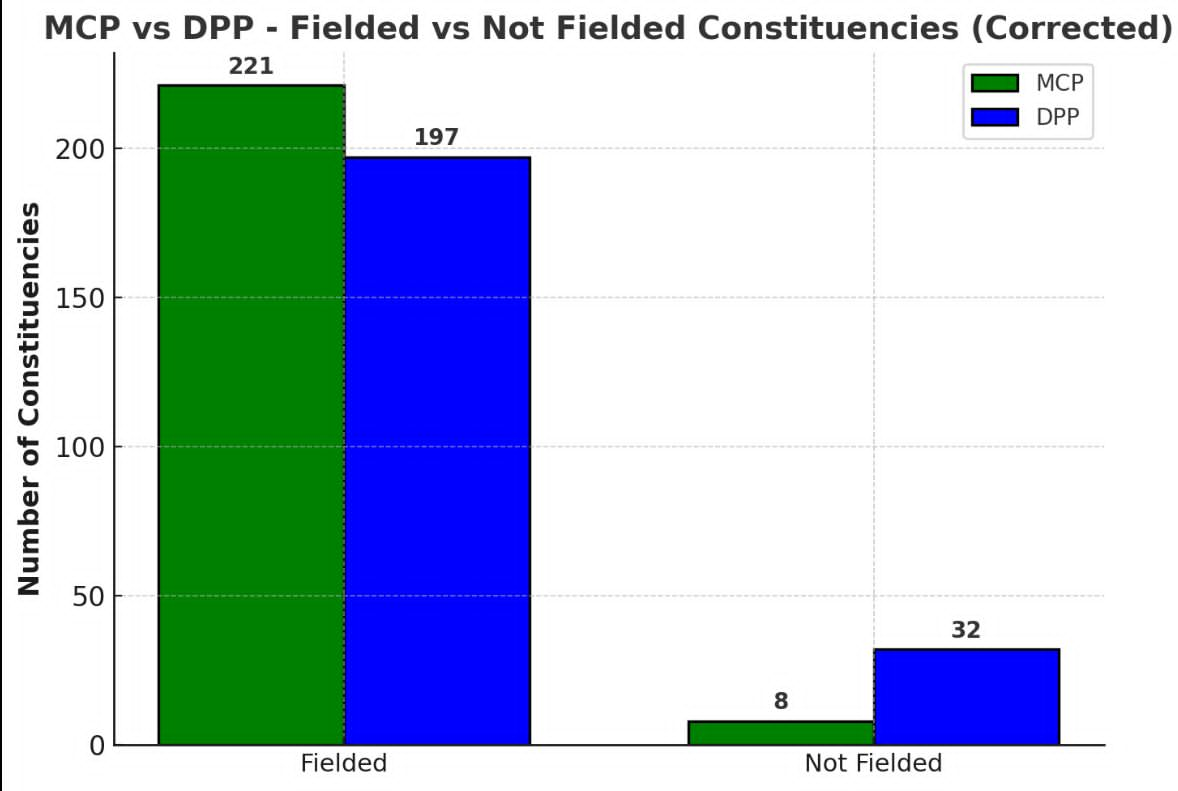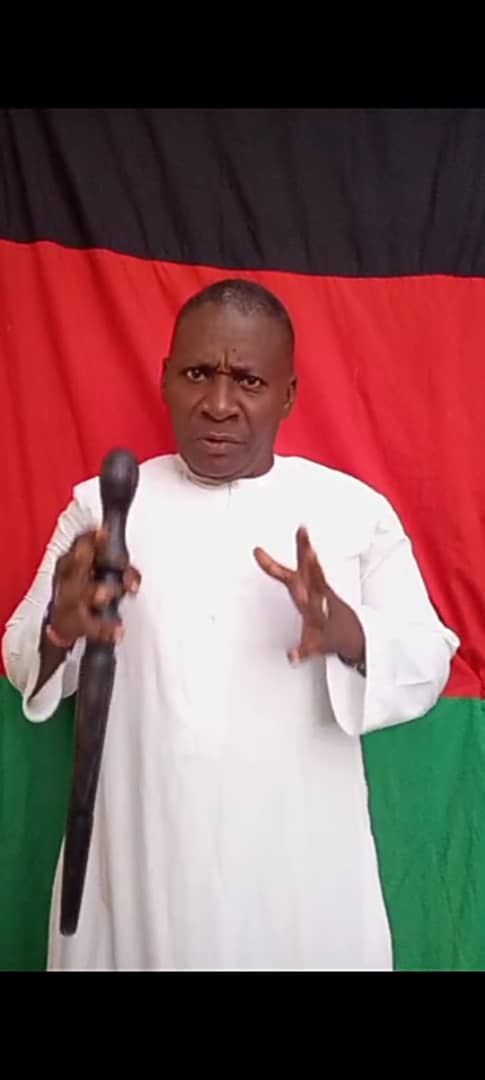By Jones Gadama
As the 2025 Parliamentary Elections approach, the ruling Malawi Congress Party (MCP) faces a glaring shortfall in its quest for total dominance.
Despite claims of near-complete coverage, MCP has conspicuously failed to field candidates in all 229 constituencies, managing to contest only 221 seats, which amounts to 96.5%.
While this may seem impressive at first glance, it reveals a troubling vulnerability for a party that holds the reins of government and should, in theory, have every corner of the nation under its political influence.
In stark contrast, the opposition Democratic Progressive Party (DPP) has demonstrated a commendable level of organization and electoral ambition by fielding candidates in 197 constituencies, representing 86% of the total.
Although this coverage is marginally lower than MCP’s, it is a substantial showing that positions DPP as a formidable challenger.
The DPP’s strategic focus on these 197 seats suggests a sharper understanding of the political landscape and a targeted approach that could very well translate into significant wins, especially in constituencies where MCP’s absence is felt.
MCP’s failure to contest eight constituencies—actually seven when considering the anomaly of two MCP candidates contesting in Mzimba Central—raises critical questions about the ruling party’s internal coherence and grassroots mobilization.
It is perplexing that a party in power, with access to state resources and a nationwide organizational structure, cannot secure candidacy in every single constituency.
This gap not only weakens MCP’s claim to an all-encompassing mandate but also opens up political space for rivals to make inroads.
Meanwhile, DPP’s presence in 86% of the seats underlines its resilience and capacity to mount a credible challenge.
This is no small feat for an opposition party in a political environment often dominated by the ruling party’s machinery.
The fact that DPP maintains such extensive coverage signals a readiness to capitalize on any voter discontent with the status quo and to exploit the vulnerabilities that MCP’s incomplete coverage exposes.
While other parties like UTM, UDF, AFORD, and PP struggle with limited reach and diminished voter support, DPP stands out as the primary contender mounting pressure on MCP.
With 197 candidates, DPP has an edge that should not be underestimated.
The opposition’s ability to contest a wide array of constituencies provides it with more opportunities to influence parliamentary dynamics and challenge the ruling party’s dominance.
MCP’s inability to claim all 229 constituencies as battlegrounds is a clear indication that the ruling party’s grip on the nation is not as tight as it would want the public to believe.
This shortfall could be interpreted as a symptom of internal divisions, candidate selection challenges, or misjudgments about certain constituencies’ political landscapes.
Whatever the cause, it signals a weakening in what should have been an unassailable position for a government party.
The DPP, on the other hand, deserves recognition for its extensive fielding of candidates, reflecting a disciplined and concerted effort to offer voters a tangible alternative.
Its 86% coverage could translate into critical gains, particularly in marginal constituencies where MCP’s absence or weak presence might tip the balance in DPP’s favor.
In summary, the 2025 Parliamentary Elections are shaping up to be more competitive than many had anticipated.
MCP’s inability to secure candidates in every constituency reveals cracks in the ruling party’s armor, while DPP’s robust participation paints a picture of an opposition ready to challenge the status quo.
The numbers speak volumes: MCP’s 96.5% coverage, though high, falls short of perfection, whereas DPP’s substantial 86% presence signals a strategic advantage that could well redefine Malawi’s parliamentary landscape.
The coming polls will test whether MCP can overcome these shortcomings or if DPP will leverage its momentum to edge ahead in the national contest.




